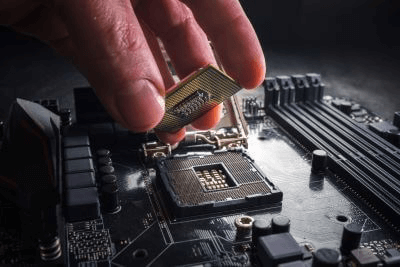What Is a Microprocessor?

A microprocessor is a semiconductor chip that acts as the central processing unit of a computer, handling arithmetic operations and controlling peripheral devices. Its evolution from multiple chips on a large circuit board to a single chip began around 1970, with the first microprocessor debuting in 1971.
Modern microprocessors integrate functionalities that once required separate chips, such as memory, graphics, and various interface functions. This integration has significantly contributed to device miniaturization and weight reduction.
Uses of Microprocessors
Microprocessors are essential in a vast array of devices for computational and control tasks. They are found in computer systems ranging from supercomputers to consumer electronics like smartphones and tablets, as well as in a multitude of consumer and professional devices such as televisions, audio equipment, vehicles, and measuring instruments.
Principles of Microprocessors
Microprocessors function by fetching instructions from memory, decoding them, executing operations or control tasks based on these instructions, and then writing back the results. This cycle enables them to perform complex tasks like running spreadsheets, managing video displays, or controlling room temperatures.
How to Select Microprocessors
The selection of a microprocessor depends on its intended use, broadly categorized into personal computer and embedded system applications:
1. For Personal Computers
PC microprocessors are designed for high processing power and large memory capacity, suitable for demanding applications and data processing. They often support widespread operating systems like Windows, offering a wide range of applications and lower development costs, though they tend to be more expensive for mass production.
2. Embedded Systems
Embedded microprocessors are generally more cost-effective, with integrated functionalities like timers and converters. However, they have lower processing capacities compared to PC microprocessors and require specific software development.
Other Information on Microprocessors
1. Microprocessor vs CPU
While microprocessors and CPUs (central processing units) are fundamentally similar, serving as the central processing unit in computers, the term ‘CPU‘ is more commonly used in recent times, especially to differentiate it from other types of processors like GPUs.
2. Bit Count and Operating Frequency
Microprocessors have evolved from processing 4-bit data to the standard 64-bit data today. This change has necessitated a shift from 32-bit to 64-bit operating systems, affecting software compatibility. Additionally, modern microprocessors operate in the GHz range, signifying their ability to perform billions of operations per second.